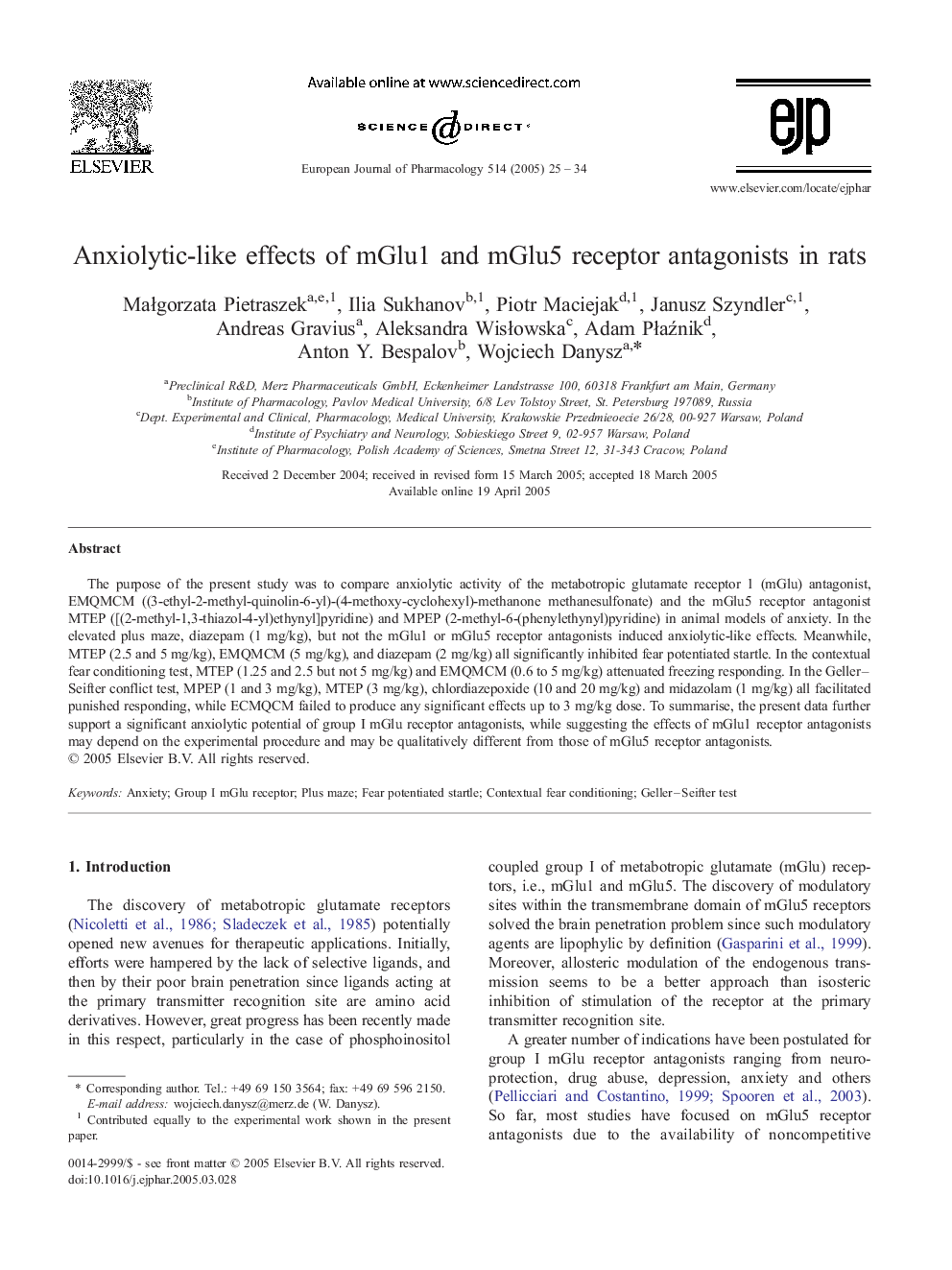| Article ID | Journal | Published Year | Pages | File Type |
|---|---|---|---|---|
| 9921344 | European Journal of Pharmacology | 2005 | 10 Pages |
Abstract
The purpose of the present study was to compare anxiolytic activity of the metabotropic glutamate receptor 1 (mGlu) antagonist, EMQMCM ((3-ethyl-2-methyl-quinolin-6-yl)-(4-methoxy-cyclohexyl)-methanone methanesulfonate) and the mGlu5 receptor antagonist MTEP ([(2-methyl-1,3-thiazol-4-yl)ethynyl]pyridine) and MPEP (2-methyl-6-(phenylethynyl)pyridine) in animal models of anxiety. In the elevated plus maze, diazepam (1 mg/kg), but not the mGlu1 or mGlu5 receptor antagonists induced anxiolytic-like effects. Meanwhile, MTEP (2.5 and 5 mg/kg), EMQMCM (5 mg/kg), and diazepam (2 mg/kg) all significantly inhibited fear potentiated startle. In the contextual fear conditioning test, MTEP (1.25 and 2.5 but not 5 mg/kg) and EMQMCM (0.6 to 5 mg/kg) attenuated freezing responding. In the Geller-Seifter conflict test, MPEP (1 and 3 mg/kg), MTEP (3 mg/kg), chlordiazepoxide (10 and 20 mg/kg) and midazolam (1 mg/kg) all facilitated punished responding, while ECMQCM failed to produce any significant effects up to 3 mg/kg dose. To summarise, the present data further support a significant anxiolytic potential of group I mGlu receptor antagonists, while suggesting the effects of mGlu1 receptor antagonists may depend on the experimental procedure and may be qualitatively different from those of mGlu5 receptor antagonists.
Related Topics
Life Sciences
Neuroscience
Cellular and Molecular Neuroscience
Authors
MaÅgorzata Pietraszek, Ilia Sukhanov, Piotr Maciejak, Janusz Szyndler, Andreas Gravius, Aleksandra WisÅowska, Adam PÅaźnik, Anton Y. Bespalov, Wojciech Danysz,
